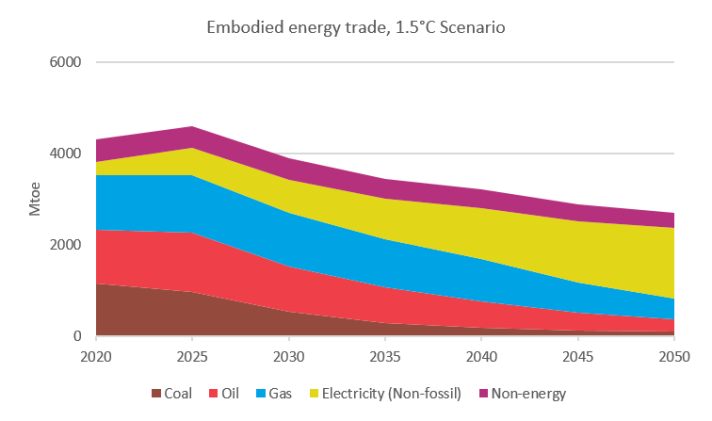The Global Energy and Climate Outlook (GECO) 2022 presents an updated view on the implications of energy and climate policies around the world.
Since the previous edition, post-pandemic economic developments and Russia’s invasion of Ukraine have caused turmoil in international energy markets.
With a timely focus on the future of (direct and embodied) energy trade, the report aims to look beyond short-term turbulence and provide insight into the structural evolution of energy trade in a decarbonising world in the coming decades.
GECO 2022 - Energy, Greenhouse gas and Air pollutant emissions balances
Projections with an energy-emissions model - using common socio-economic assumptions
GECO 2022 - Macro-economic Baseline
Economic Multi-Regional Input-Output tables
Global energy mix and emissions
Meeting the 1.5°C target set out in the Paris Agreement requires a rapid shift to energy systems dominated by renewable sources. Along with energy efficiency improvements, far-reaching electrification of end-use drives down total volumes of fossil fuel trade. In a scenario that limits global warming to 1.5C at the end of the century, global emissions decrease rapidly over the coming decades, leading to an 80% emission reduction in 2050 compared to today.
The major policy levers in the coming decade are an accelerated deployment of renewables, continuous improvements in energy efficiency, and the electrification of as many end-uses as possible. Equally important, but more so after 2030 is the mobilisation of negative emissions technologies and options, largely in the land sector.
Reduced fossil fuel trade and increased self-sufficiency
Policymakers’ goals of improving energy security and reducing emissions appear to have overlapping solutions: increasing renewables use and electrification to reduce emissions also results in reduced imports of fossil fuels and increases the share of domestic energy production in many countries.
The increase in alternative forms of energy trade, such as biomass and low-carbon hydrogen, make up for only part of the declining fossil fuel trade, and a greater share of energy produced domestically increases global energy self-sufficiency as the world decarbonises. Ambitious global climate policies therefore induce a declining trend of total volumes of energy trade, introduce shifts in geographical energy trade patterns, and reduce energy import dependency.
Cleaner electricity embodied in trade of goods
Currently, the magnitude of direct energy trade and indirect energy trade embodied in the trade of goods and services are of similar magnitude. More than 60 % of embodied energy trade occurs in traded products of energy intensive and other manufacturing industries.
While the energy intensity of traded goods is projected to substantially decrease in the 1.5°C Scenario, rising trade flows under a growing economy lead to a more gradual decline of embodied energy in trade under ambitious climate policy.
Fossil fuels embodied in trade, most importantly coal, are projected to rapidly decline towards 2050. While electricity is only playing a marginal role for direct energy trade, the strong shift towards electrification substantially increases the share low carbon electricity in embodied energy trade.


